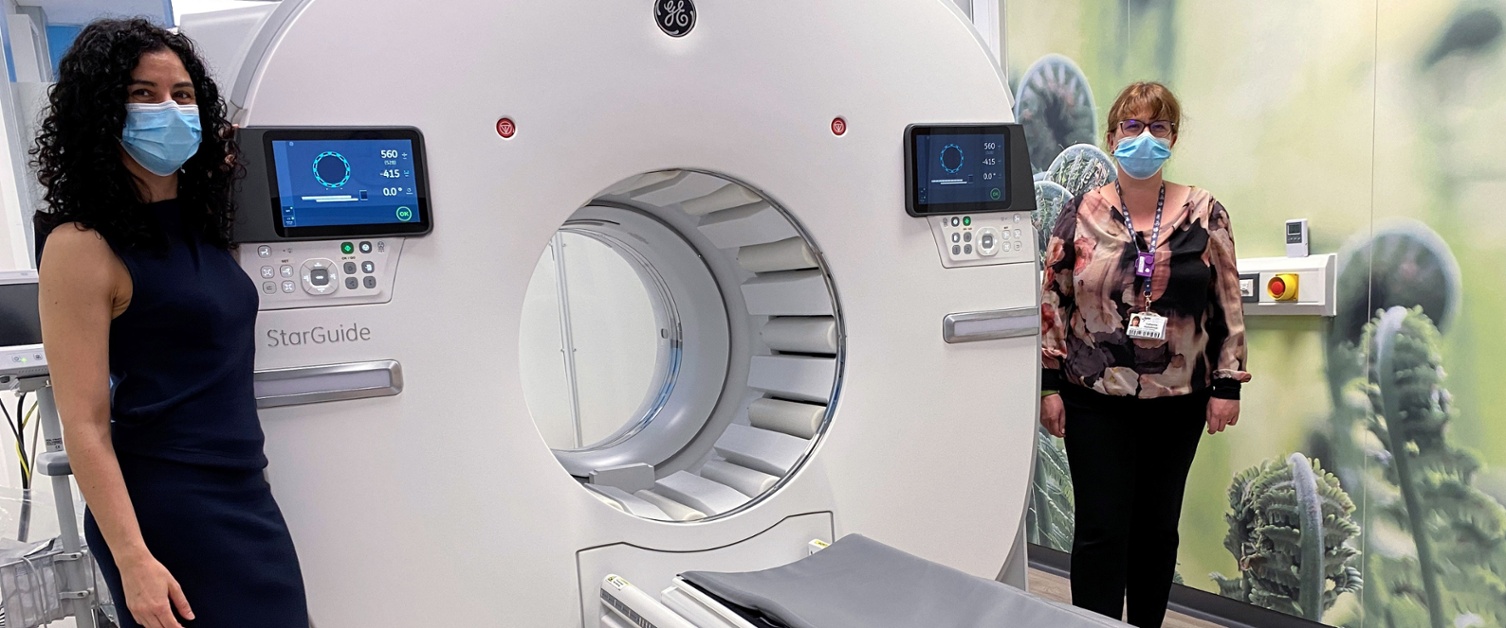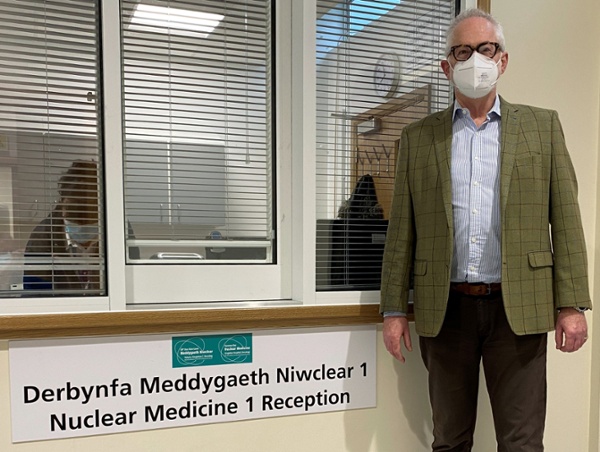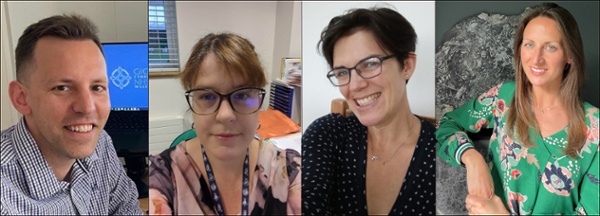Singleton Hospital gets £4.1m state-of-the-art scanners investment

19/05/2022
A £4.1 million investment in Swansea’s Singleton Hospital has made it a UK leader in the diagnosis of cancer and other serious conditions.
The nuclear medicine department’s two oldest scanners – one the oldest in the UK – have been replaced with cutting-edge new ones which provide extremely sharp images.
Pictured above with Seren are clinical team lead Monica Martins and principal clinical scientist Catherine Humphreys
The new equipment will help clinicians spot cancers earlier.
Singleton is home to the South West Wales Cancer Centre and while the two new SPECT-CT scanners will be used primarily in cancer diagnoses, they will also be used in other specialties – cardiology, for example.
The GE-manufactured machines are a StarGuide, nicknamed Seren (Star), and an NMCT 870DR, nicknamed Draig (Dragon).
They use different scanning components fused together to provide more accurate information about the area being imaged.
Seren is the first model from the manufacturer to be used in the UK and includes a technology known as CZT (Cadmium-Zinc-Telluride) in a hybrid SPECT-CT digital 3D imaging system.
It features 12 detectors in a ring design, with every detector placed at the optimal position independent of the others.
 “The detectors enable close proximity to patients and focused scans” explained Head of Nuclear Medicine, Professor Neil Hartman (pictured right).
“The detectors enable close proximity to patients and focused scans” explained Head of Nuclear Medicine, Professor Neil Hartman (pictured right).
“The improved SPECT resolution enables sharp images for better visualization of fine anatomical details.
“This is important to help enable physicians, radiologists, and cardiologists detect disease at earlier stages.
“The compact design of StarGuide detectors affords increased proximity to the patient, high image resolution and sensitivity.
“Resolution is the ability to distinguish a cancer or other lesion from something else. Sensitivity is the ability to discover a lesion.
“Both the new machines are much more sensitive to discovering new cancers or differences in myocardial muscle performance and so on.”
Funding for the new scanners and associated work was provided by the Welsh Government.
Professor Hartman said the department had undergone an immense transformation, with the work taking around six months to complete.
“We have a lot of scientific and other expertise but our two nuclear medicine scanners at Singleton were more than 20 years old. One was the oldest working scanner in the UK,” he added.
“The transformation has put Singleton nuclear medicine, and therefore the greater Swansea Bay area, on the map.
“We have gone from being an ugly duckling to a UK leader in diagnostic capabilities.”
Clinical team lead Monica Martins added: “It is a real privilege to lead a service which has cutting edge technology available to potentially introduce novelty into patient care and benefit diagnostic pathways.
“It will also facilitate research and development with enough power to influence change in the entire field of nuclear medicine.”
Each machine has two scanning components: SPECT (Single Photon Emission Computed Tomography) and CT (Computed Tomography).
 SPECT images are obtained following an injection of a chemical which is mildly radioactive and absorbed by the tumour or the part of the body being scanned.
SPECT images are obtained following an injection of a chemical which is mildly radioactive and absorbed by the tumour or the part of the body being scanned.
L-r: Dr Alex Powles, Catherine Humphreys, Rachel Bidder and Dr Victoria Trainer
The gamma radiation emitted is detected by a special camera that rotates in a complete circle to construct a 3D image.
CT images are obtained while the patient lies on the same bed, which slides through the centre of the scanner as it rotates in a 360-degree arc. Both images are then merged to give the best possible result.
Radiologist Dr Alex Powles said: “It is fantastic to have state of the art SPECT-CT scanning facilities.
“This will no doubt improve the diagnostic pathway for patients across the spectrum of cancer and other hospital specialties.
“It will also likely reduce the requirement for additional imaging investigations such as MRI.”
Principal clinical scientist Catherine Humphreys said the two scanners would allow them to scan faster and reduce radiation doses – while still ensuring excellence in diagnostic imaging quality.
She added: “We are delighted to be able to offer this cutting-edge diagnostic nuclear medicine service for our patients.”
Clinical scientist Rachel Bidder said patients not just from Swansea Bay but from Cwm Taf and Hywel Dda too would benefit from the ground-breaking investment.
“They will receive the best nuclear medicine experience in Northern Europe and we are extremely proud of this achievement,” she said.
Radiologist Dr Victoria Trainer said she was delighted the people of Swansea Bay and its neighbours would now benefit from the latest technology and the best imagining quality.
“Our increased capacity and optimised imaging should reduce waiting lists, improve diagnostic accuracy, reduce the need for further imaging, all hopefully smoothening and shortening the patient pathway at what can be difficulty times for them.”
Rydym yn croesawu gohebiaeth a galwadau ffôn yn y Gymraeg neu'r Saesneg. Atebir gohebiaeth Gymraeg yn y Gymraeg, ac ni fydd hyn yn arwain at oedi. Mae’r dudalen hon ar gael yn Gymraeg drwy bwyso’r botwm ar y dde ar frig y dudalen.
We welcome correspondence and telephone calls in Welsh or English. Welsh language correspondence will be replied to in Welsh, and this will not lead to a delay. This page is available in Welsh by clicking ‘Cymraeg’ at the top right of this page.